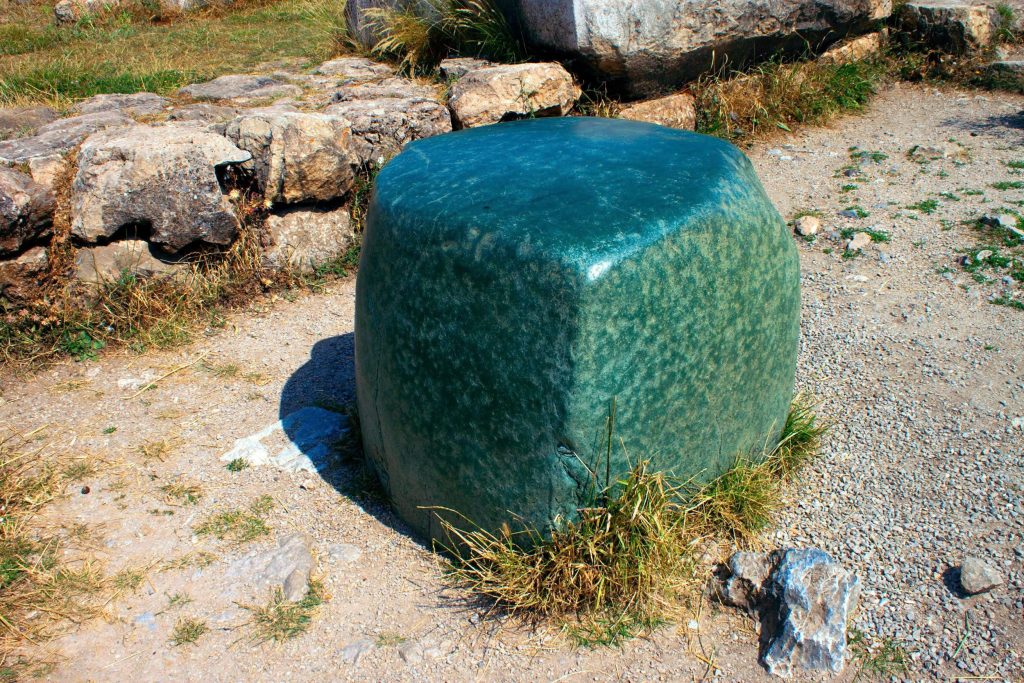Deep within the landscape of modern-day Turkey, the ruins of Hattusa stand as a silent testament to the grandeur of the Hittite Empire. This once-mighty capital, a marvel of Bronze Age engineering, covered nearly two square kilometers, showcasing a civilization that reached its peak between the 16th and 13th centuries BC. At its height, Hattusa was home to a thriving population of approximately 40,000 to 50,000 people, residing within a city of monumental architecture, fortified walls, and sacred temples.

The ruins of Hattusa reflect the pinnacle of Hittite architectural mastery. The city’s fortifications, palaces, and religious centers were built with impressive precision, demonstrating an advanced understanding of masonry and construction techniques. Visitors who walk among the remains today witness the tightly fitted polygonal stone walls, a remarkable feat of engineering that allowed these structures to endure for millennia. The city’s gateways, particularly the Lion Gate and the Sphinx Gate, remain adorned with intricate carvings that depict warriors, divine figures, and mythological creatures, offering modern explorers a glimpse into the artistic and religious world of the Hittites.
One of the most captivating features of Hattusa is its elaborate temple complex, which once served as the spiritual heart of the city. These temples, dedicated to the Hittite pantheon, were the sites of religious ceremonies, offerings, and the preservation of cuneiform tablets inscribed with hymns, laws, and treaties. The discovery of these texts has provided invaluable insights into the diplomatic and cultural exchanges between the Hittites and their contemporaries, including the Egyptians and Babylonians. Among the most significant artifacts uncovered are the tablets containing the Treaty of Kadesh, one of the earliest recorded peace treaties, signed between the Hittites and the Egyptians under Pharaoh Ramses II.
Yet, amidst the vast expanse of grey stone structures, one artifact stands out in stark contrast—the Green Stone of Hattusa. This polished cubic block, believed to be made of nephrite jade, has fascinated historians, archaeologists, and tourists alike. Unlike the surrounding masonry, which consists primarily of limestone and andesite, the Green Stone appears to have been deliberately placed within the ruins, suggesting its significance in Hittite culture.
Theories regarding the purpose and origin of the Green Stone abound. Some scholars believe it was a sacred relic, possibly an object of worship or a symbol of divine power. Others speculate that it was an imported treasure, brought to Hattusa from distant lands, signifying the extensive trade networks maintained by the Hittites. Some even suggest that the stone might have been used in religious or astronomical rituals, given its highly polished, reflective surface. Despite extensive research, its true function and provenance remain unknown, adding to the intrigue that surrounds Hattusa.
The mystery of the Green Stone is only one facet of the enigma surrounding the city. While Hattusa stood as a formidable capital for centuries, its sudden abandonment in the early 12th century BC has puzzled historians. The decline of the Hittite Empire coincided with the broader collapse of Bronze Age civilizations, a period marked by widespread turmoil, invasions, and natural disasters. However, no definitive cause for Hattusa’s fall has been established. Some scholars argue that the city fell victim to internal strife and rebellion, while others suggest it succumbed to external invasions, possibly by the enigmatic Sea Peoples. Climate change, famine, and resource depletion have also been proposed as contributing factors to the city’s demise.
Whatever the cause, the once-thriving capital was left in ruins, its palaces and temples reduced to silent stone remnants. The Green Stone, however, remained—a solitary artifact enduring through the ages, silently witnessing the rise and fall of one of history’s great civilizations.
For modern visitors, Hattusa offers a journey into the past, a place where history, mystery, and archaeological wonder converge. Walking through its ancient streets, exploring the massive city gates, and standing before the Green Stone provide an immersive connection to a world long lost but not forgotten. The site continues to be a focal point for archaeological research, with scholars working to uncover more about the Hittites’ way of life, their interactions with neighboring cultures, and the reasons behind their empire’s decline.
Today, the ruins of Hattusa have been recognized as a UNESCO World Heritage Site, preserving this remarkable chapter of human history for future generations. The Green Stone, an object of both reverence and speculation, remains one of its most intriguing artifacts, drawing countless visitors eager to unravel its secrets.
Hattusa’s story is one of triumph and mystery, a civilization that once commanded great influence only to fade into obscurity. Yet, through its ruins, its inscriptions, and the ever-enigmatic Green Stone, the legacy of the Hittite Empire endures, offering an enduring testament to the ingenuity and complexity of ancient civilizations.





